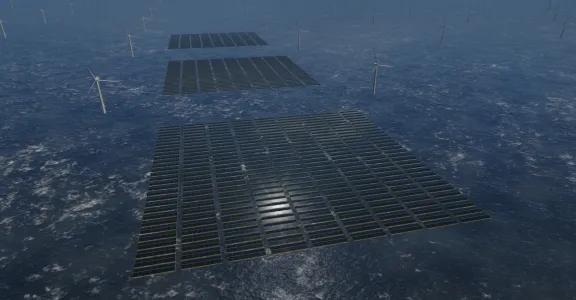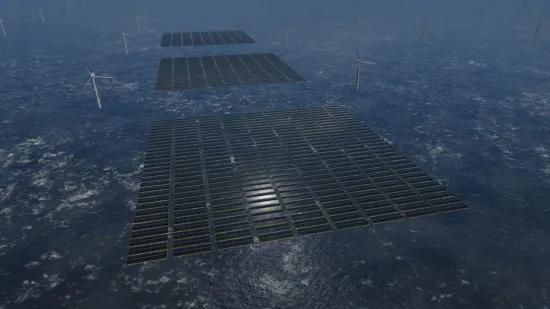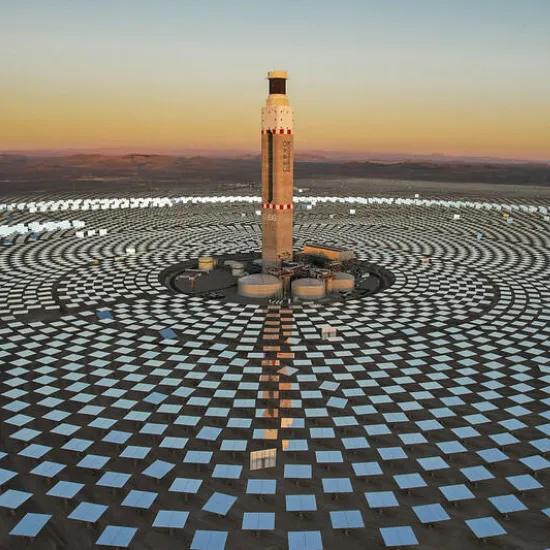New project to scale up offshore solar soon to embark
Together with fifteen other leading European partners, Sirris will start an EU Joint Industry Project, in which offshore solar technology is scaled up to formats of 150 MW, enabling to build Gigawatt scale farms. These building blocks are to become a new standard in offshore energy farms. Installing solar farms within offshore wind farms will make better use of available sea space, increase energy output, provide more continuous power over the seasons and bring down costs for green electricity production and the energy system.
Offshore solar is becoming a major contributor to the successful energy transition in the North Sea. This new project will kickstart the development of a standardised offshore solar building block, that fits right in between four offshore wind turbines. This allows for optimised multi-source offshore energy farms.
Tackling challenges together
The collaboration, coordinated by leading company in certification and engineering RINA, between pioneering offshore solar developer Oceans of Energy, four technology developers (Solarge, TKF, Pauwels Transformers, SolarCleano), five technical and environmental consultancies (RINA, ABS, Aquatera Ltd, Aquatera Atlantico, and WavEC), three testing laboratories (MARIN, Fraunhofer CSP, Sirris), the marine policy think-tank European Marine Board and the offshore wind farm developer Vattenfall, as potential client for implementation, is aimed to resolve remaining challenges for the rollout of large scale offshore solar into new and existing wind farms. This includes proving the robustness and performance of the solar panels in offshore conditions, as well as researching the impact on the environment, while securing sustainability in the whole value-chain of this emerging industry.
The envisioned result is that the project BAMBOO (‘Build scAlable Modular Bamboo-inspired Offshore sOlar systems’) matures the technologies and allows for attracting the funds for the first-of-a-kind 100-200 MW offshore solar farm at a Vattenfall offshore wind farm, before the turn of the decade. At which wind farm (development) this will take place still has to be decided.
Lower investments in total energy system
The complementarity of energy patterns of a co-located offshore solar and wind farm allows the farm to use the same grid connection more efficiently, thus reducing the need for investments in expanding the energy system. In addition, the space needed, both on land and at sea, for generating renewable energy can be drastically reduced by using the offshore wind farm space for solar as well. Moreover, the increased scale of offshore solar farms can reduce their environmental impacts per installed solar panel, through a minimal need for anchors on the seabed and centralising the electricity export cable in a larger floating island.
Support in development of international standards
Further research will be conducted on predicting and improving the lifetime energy performance. There will also be a focus on measuring and predicting the environmental impact of the technology. The project will contribute to the development of international standards and testing methodologies for offshore solar technology. For this, the innovation programme will conduct hydrodynamic assessments at MARIN, climate chamber tests at Sirris, tests for PV panels at Fraunhofer and accelerated lifetime tests based on offshore operations & measurements. Furthermore, the activities aim towards internationally aligned policies including those for environmental assessment frameworks.
Read more about the project in the press release by Oceans of Energy.







